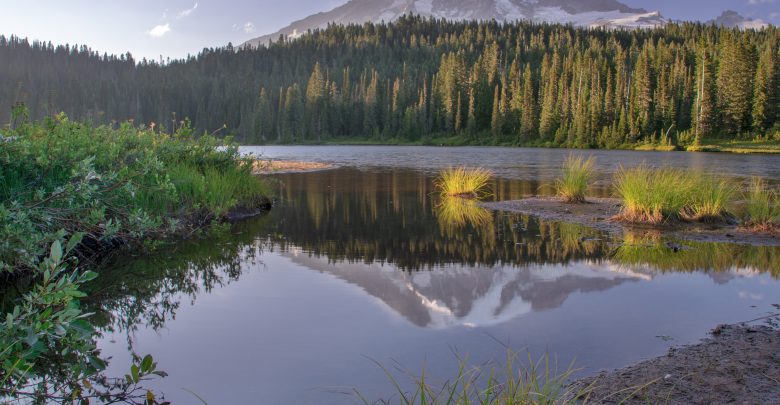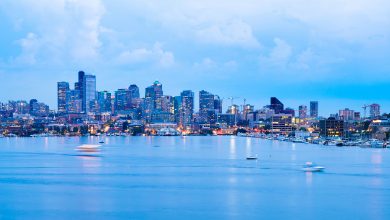You Need to See These Amazing Emerald State Sights at Least Once
3 underrated natural wonders in Washington state

More than 7 million people make their home in Washington State. The only state in the U.S. to be named for a president, Washington became the 42nd state to enter the union on November 11, 1889. You may know Washington for its copious production of apples, the Space Needle and the kind of funnily named city called Walla Walla. But there’s much more to Washington than that. In fact, Washington is home to some pretty impressive natural wonders that you’ll want to add to your traveling bucket list. Here are three of them.

The Channeled Scablands
This area was first referred to as “scablands” by early settlers in the region because no farming could take place on the barren land. The 2,000 square-mile area of land extends from around Spokane, Washington west to the Columbia River near Vantage and southwest to the Snake River near Pasco. Even with its size, many residents of Washington have never heard of the area.
The name “Channeled Scablands” refers to the way in which the land is crisscrossed by long channels cut into the bedrock. These channels are called coulees, and more than 150 distinct coulees decorate the land—some of them hundreds of feet deep. The Moses Coulee is 40 miles long, and the Grand Coulee is 60 miles long. The Scablands are quite an interesting landscape.

For years, the origins of the Scablands remained a mystery, and multiple theories arose. The Scablands’ beginnings were a source of heavy debate—one of the biggest debates in the field of Earth Science. Scientists have since accepted as fact that the Scablands were formed after more than 40 different cataclysmic floods in the region.

Mt. Ranier
Mt. Ranier is an active volcano and stands 14,411 feet high—higher than any other mountain in the Cascade Mountain Range. It has 26 major glaciers, making it the most glaciated mountain in the contiguous United States. At Mt. Ranier National Park, there are a variety of ecosystems and plant life. Within the boundaries of the 369 square-mile national park, you’ll find alpine meadows, rocky tundra, hot springs, rivers, lakes, temperate rain forests and more.

Reflection Lake on the southeast side of Mt. Ranier gives a perfect reflection of the mountain in the water. Wildflower season is short—July through August—but it’s a spectacular thing to see. Native to the area are Indian Paintbrushes, blue and purple Broadleaf Lupine and tiny flowers that look like balls of fur called Pasqueflowers. Mt. Ranier National Park has been ranked the number one place in the United States to see wildflowers. It was also ranked one of the 50 best places on earth to view them.
Mt. Ranier National Park welcomes more than 2 million visitors each year. An annual pass costs $55, and the per-person fee to enter the park is $15. Camping is available at the park as well. The nightly campground fee is $20, and group campgrounds that accommodate 25 to 40 people run $60 per night. For more information about Mt. Ranier and the beautiful national park that surrounds it, visit www.nps.gov/mora.

Mt. St. Helens
Mt. St. Helens is the only volcano in the lower 48 states to have erupted in modern times. The massive volcano erupted on May 18, 1980 after an earthquake near its base, which triggered the largest landslide in recorded history. The debris mudflow from the landslide stretched 17 miles and was 600 feet deep in some places. The landslide exposed parts of the mountain that had magma closest to the surface, and the pressure from inside the mountain was released, causing an eruption of Mt. St. Helens that destroyed nearly 200 miles of roads, 47 bridges, and 250 homes. The eruption also claimed the lives of 57 people, including one USGS volcanologist who had predicted the event. The blast lowered the mountain’s elevation by 1,300 feet.

Visitors are welcome to Mt. St. Helens. More than 500,000 visitors come to the mountain every year. Many come to climb the mountain, which requires a permit. The most popular time of year to climb is from late spring to early fall, and there’s a limit of 100 people on the mountain per day. Helicopter tours of the mountain are available as well, but the most popular activity at Mt. St. Helens is “mountain-watching” and photographing the mountain. There are two different visitor centers from which to get some of the best views from a distance. Visit www.mountsthelens.com for more information on this active volcano—and one of the most underrated natural wonders—in Washington State.




